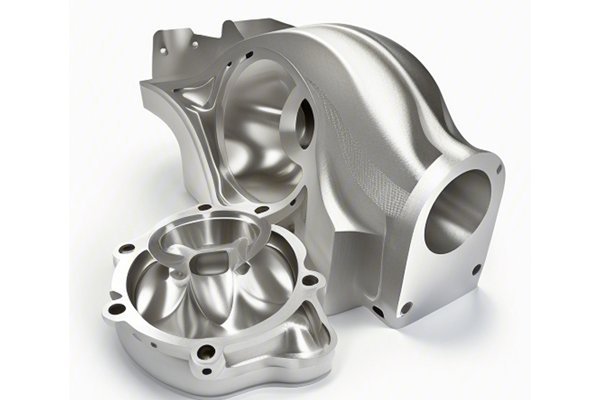Opening
Did you know that aluminum, one of the most abundant metals in the Earth’s crust, has a melting point ranging between 660 to 720 °C (1220 to 1328 °F), depending on its alloy composition? This unique characteristic is crucial in various industries where precision and performance are vital, particularly in CNC (Computer Numerical Control) machining. Understanding how the melting point of aluminum influences its properties can significantly affect not just production efficiency, but also the quality and longevity of the machined parts.
to CNC Machining and Aluminum
CNC machining is a process that utilizes computer-controlled machines to shape materials into precise components. It has revolutionized manufacturing by enabling complex designs and improving accuracy and efficiency. Aluminum’s lightweight and excellent mechanical properties make it a popular material for numerous applications in automotive, aerospace, and consumer electronics.
However, the specific properties exhibited by aluminum parts can vary widely, depending primarily on their melting point and subsequent processing. This blog will delve into how the melting point influences aluminum’s workability, strength, corrosion resistance, and thermal properties in CNC machining, offering insights for manufacturers looking to optimize their processes.
Understanding Aluminum’s Melting Point
The melting point of aluminum is essential for understanding its thermodynamic behavior during the machining process. Aluminum alloys consist of a base aluminum element mixed with other metals, such as copper, magnesium, or silicon, each affecting the melting point.
Alloy Variations: Different alloys can have varying melting points, altering their characteristics drastically. For example:
Understanding these variations allows machinists to select the right alloy for a specific application.
The melting point impacts several vital aspects in CNC machining:
Effects of Melting Point on Aluminum Properties in CNC Machining
The workability of aluminum is critically tied to its melting point. Generally, alloys with lower melting points are easier to machine due to their malleability. However, excessive heat can lead to a condition known as “galling,” which can ruin the workpiece.
Solution: Applying suitable lubricants or cutting fluids can help manage temperatures and improve workability. For instance, using water-soluble cutting oils can significantly reduce friction and improve surface finish.
Mechanical properties such as tensile strength, hardness, and fatigue resistance are directly affected by temperature during machining. High-temperature machining processes can alter these properties, leading to parts that are either too brittle or weak.
Solution: Pre-heating aluminum before machining can help maintain its desired mechanical properties. For example, when machining 7075 aluminum, controlling temperature through pre-heating can ensure that the alloy retains its strength.
While pure aluminum boasts excellent corrosion resistance, the presence of other alloying elements can alter this property. Some Aluminum alloys become more vulnerable to corrosion when heated excessively during machining.
Solution: Applying protective surface treatments such as anodizing after machining can enhance the resistance of aluminum parts to corrosion and wear. Regular testing and monitoring of the corrosion resistance of the final product should be implemented to ensure longevity.

Aluminum has good thermal conductivity, which means it can dissipate heat effectively. However, as temperatures rise due to machining processes, the material may undergo changes that alter its thermal stability.
Solution: Employing strategies to control temperatures, such as using cooling systems during machining, can help sustain thermal properties and mitigate potential distortion of machined components.
Choosing the Right Aluminum Alloy for Machining
When selecting an aluminum alloy for CNC machining, consider the following factors:
Optimizing CNC Machining Processes with Aluminum
To counter the challenges associated with aluminum’s melting point, manufacturers should design workflows considering the following:
Investing in training for machinists about the properties of aluminum and their implications in CNC machining builds a stronger workforce. Additionally, adopting intelligent manufacturing systems that help optimize machining parameters can yield significant efficiencies.
In conclusion, the melting point of aluminum plays a pivotal role in its properties and behavior during CNC machining. Understanding how to leverage this knowledge can lead to improved workability, better mechanical properties, enhanced corrosion resistance, and controlled thermal characteristics.
For manufacturers, the importance of selecting the right aluminum alloy and adapting machining processes accordingly cannot be overstated. These measures can yield greater efficiency, reduce costs, and ultimately enhance the quality of finished products.
As industries increasingly gravitate towards aluminum for its lightweight and durable characteristics, comprehending its melting point’s effects takes prominence in any successful manufacturing strategy. The discussion surrounding aluminum’s properties offers valuable insights that are worth revisiting, particularly as technology continues to evolve in the world of machining.
By implementing these strategies, manufacturers can fortify their position in the market as leaders who prioritize quality and innovation, ensuring their prepared well for future challenges and opportunities in CNC machining.






